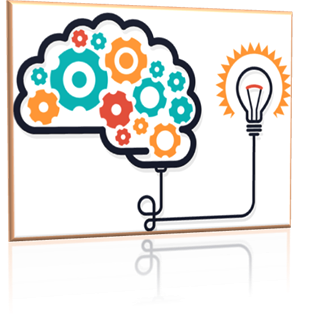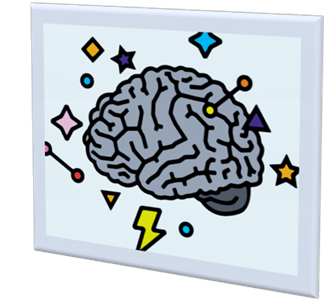The Neuroplasticity of Brain
“Instead of reality being passively recorded by the brain, it is actively constructed by it.”― David Eagleman, Incognito: The Secret Lives of the Brain
― Norman Doidge, The Brain That Changes Itself: Stories of Personal Triumph from the Frontiers of Brain Science
Brain is highly neuroplastic in nature. It is one of the most active organs consuming 20% of total body oxygen. It controls our thoughts, memory, emotions, touch, motor skills, vision, breathing, temperature, hunger, and every process that regulates our body. It contains 86- 100 billion neurons and almost 200-1000 connections per neuron, non-neuronal glial cells, & blood vessels. Being highly neuroplastic in nature it has immense potential to modify, change, and adapt both structurally & functionally. Cognitive neuroscientist David Eagleman, used a term ‘livewired brain’ instead of ‘hard-wired brain’ because of the ability of neural networks to change through growth and reorganization. A rewired brain functions a bit differently from how it previously functioned due to the resultant novel connections that might induces cortical remapping, circuit and network changes by learning a new task, environmental influences, repetition, mental exercises. Neuroplasticity exhibit variability across individuals due to individual differences such as age, psychological factors, and neurological diseases.


Cognition & Cognitive Functions
“Through practice, repeated signals have been passed along neural networks, strengthening synapses and thereby burning the skill into the circuitry.”― David Eagleman, The Brain: The Story of You
Cognition refers to a range of mental processes relating to the acquisition, storage, manipulation, and retrieval of information. It involves mental process of acquiring knowledge and understanding through thought, experiences, senses & helps in decision making and producing appropriate responses. Cognitive functioning implies multiple mental abilities, including learning, thinking, reasoning, remembering, problem solving, decision making, and attention. These higher order functions can get affected due to age, education, diet, hormonal changes, stress, prolonged use of drugs/alcohol/ medicines, psychiatric disorders, psychological disorders, and neurological disorders. The ability to test, measure and monitor cognitive performance across the lifespan opens the chance for patients to be identified earlier, access treatments faster, to stay healthy for longer period, & improving quality of life.
Cognitive rehabilitation therapy (CRT) is one of the most supported non-pharmacological therapies which uses various therapeutic techniques to improve and restore cognitive functions in people with cognitive impairment. To assess the effectiveness of CRT, the person’s treatment team may carry out ongoing evaluations, like neurocognitive tests & neuropsychological assessments.
CRT is of two types: Restorative & Compensatory.
Restorative CRT: improvement of cognitive functions by reinstating or strengthening the lost or weakened functions. It is used to practice skills for improvement of challenged function/skill and works solely on the idea of neuroplasticity.
Compensatory CRT: helps a person work around their injury using assistive devices as they build up new skills.
The Psychological Mind & Behavior
“Genetics is crude, but neuroscience goes directly to brain and the mind follows.”-Leo Kass, American Physician
Psyche or mind is an abstract concept used to characterizes thoughts, feelings, subjective states, consciousness, and self-awareness that arises from the brain. Mind represents intellect & consciousness that is expressed in the form of thought, perception, memory, emotion, will and imagination. We experience our conscious activities such as thinking, speaking, writing, imagining, how this informs our sensations, what we hear, see, touch, taste, and smell as a direct result of brain activity. Our mind is therefore considered as a combination of brain’s conscious and unconscious cognitive processes.
A famous quote by James Watson, Father of Behaviorism says, “Give me a dozen healthy infants, well-formed, and my own special world to bring them up in and I’ll guarantee to take any one at random and train him to become any type of specialist I might select – doctor, lawyer, artist, merchant-chief, and yes, beggarman and thief.” Behavior is an organism’s activities in response to external or internal stimuli, including objectively observable activities, introspectively observable activities, and nonconscious processes. Cognitive neuroscience uses advanced methods such as functional brain imaging and neuropsychological patient analysis. to understand the interactions between mind, behavior, cognition, & brain mechanisms.
Moreover, the utilization of effective emotion regulation techniques and emotion regulation strategies can further enhance the brain’s adaptive capabilities by promoting emotional well-being.

